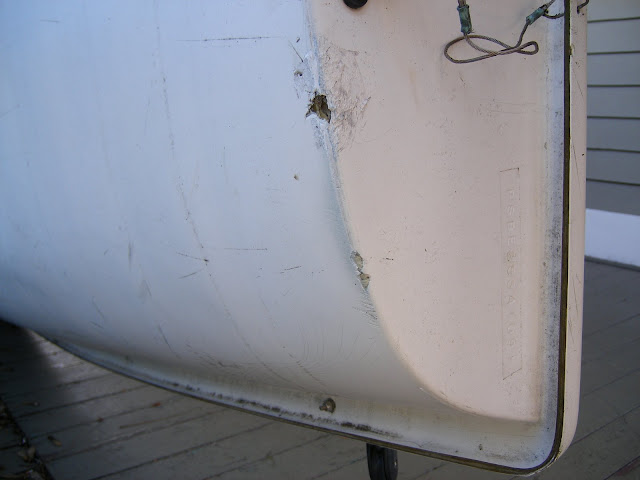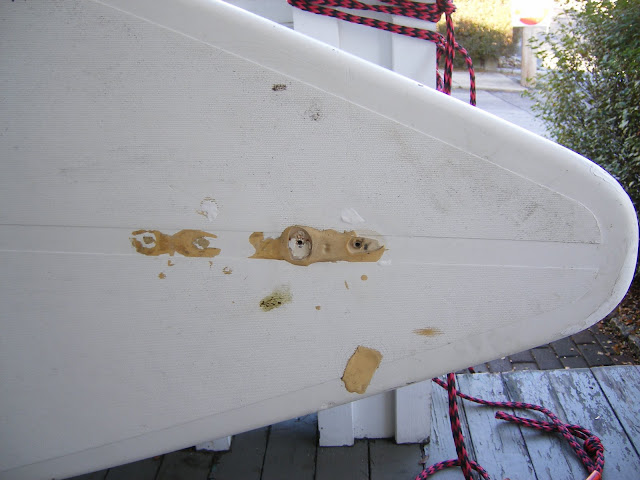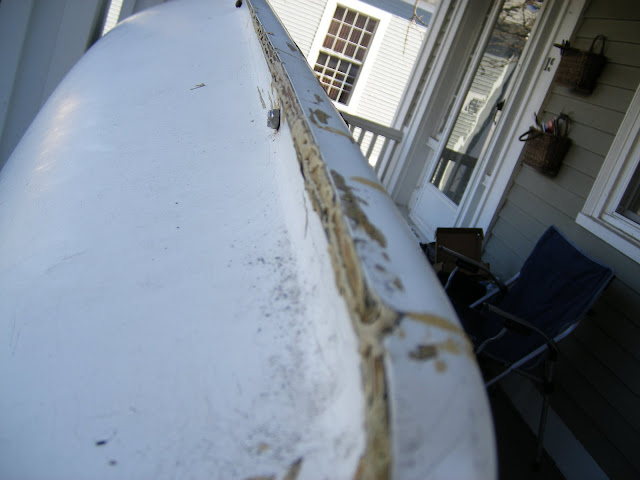Super Delegate
Member
Ok guys here goes:
Splash!
I'm excited as hell!
I just jumped into the Laser deep end!
I have a back story here and will need some help with what I plan to do, you guys seem to be more than willing to help the newbies so I will give it a go.
My Goal:
I will be running a blog parallel to this thread that is intended to chronicle my attempt at fixing/reconditioning a 1991 laser. I will be running no ads on my blog, it's sole purpose is for others (like yourself) to comment on the best ways/means to address each next step with the hope that we can piece together a solid reference for anyone who is in the market for a used boat or someone who just needs to know the basics about gelcoat, fiberglass repair, delamination issues, adding upgrades or just the best way to make their old crap like new again.
I will be contacting Jim Meyer from Intensity Sails to chime in, as well as a local fiberglass/gelcoat/awlgrip specialist, Norm Bessette, from Bessette Marine Finishes. They will be able to legitimize my blog a bit I hope, and readers will know the info they are getting is not from 15 y/o kids but true professionals in the field.
I am sure all the info can be found on this site and that these things have been discussed ad nauseum, but what I want to do is put it all on a few pages with a ton of pics as I go step by step.
The boat's story:
Norm Windus, coordinator/director for URI Sailing was kind enough to lend me a laser from his program for the price of fixing it up. It was a practice boat for the navy team that was donated to the college. It does have some issues that some would call serious, others maybe not so. Most likely, I will be dumping a good amount of money into this boat, which is ok because I will probably make Norm an offer to buy it outright when I'm done.
My story:
I come from bigger boat experience, my father owns a Pearson 26 in Bristol, RI which I pretty much learned on. I also learned on a Pearson 30, Nordic 34, and finally crewed for a summer on a 12 meter in Newport. All the while trying my hand at different boats, like J24's and the Melges 24. I guess I am doing this backwards but I want to become a much better sailor so now I need/must do the dinghy thing. So here I am in TLF. I also have extensive rigging/splicing experience, and I manage a West Marine store, so I guess you could say I am in a good position to start an endeavour like this.
I have never sailed a boat smaller than 24', so when I'm done fixing it, it will be time to learn how to use it.
Please visit my blog as I will be updating it all the time with pics, progress, and responding to comments that you have. If you have interest here, please bookmark this so you don't lose me in the forums.
The title is "THE LASER ADVENTURE" here on TLF.
Without further ado, here's the linky to the bloggy...
http://brennan-laserproject.blogspot.com/
Splash!
I'm excited as hell!
I just jumped into the Laser deep end!
I have a back story here and will need some help with what I plan to do, you guys seem to be more than willing to help the newbies so I will give it a go.
My Goal:
I will be running a blog parallel to this thread that is intended to chronicle my attempt at fixing/reconditioning a 1991 laser. I will be running no ads on my blog, it's sole purpose is for others (like yourself) to comment on the best ways/means to address each next step with the hope that we can piece together a solid reference for anyone who is in the market for a used boat or someone who just needs to know the basics about gelcoat, fiberglass repair, delamination issues, adding upgrades or just the best way to make their old crap like new again.
I will be contacting Jim Meyer from Intensity Sails to chime in, as well as a local fiberglass/gelcoat/awlgrip specialist, Norm Bessette, from Bessette Marine Finishes. They will be able to legitimize my blog a bit I hope, and readers will know the info they are getting is not from 15 y/o kids but true professionals in the field.
I am sure all the info can be found on this site and that these things have been discussed ad nauseum, but what I want to do is put it all on a few pages with a ton of pics as I go step by step.
The boat's story:
Norm Windus, coordinator/director for URI Sailing was kind enough to lend me a laser from his program for the price of fixing it up. It was a practice boat for the navy team that was donated to the college. It does have some issues that some would call serious, others maybe not so. Most likely, I will be dumping a good amount of money into this boat, which is ok because I will probably make Norm an offer to buy it outright when I'm done.
My story:
I come from bigger boat experience, my father owns a Pearson 26 in Bristol, RI which I pretty much learned on. I also learned on a Pearson 30, Nordic 34, and finally crewed for a summer on a 12 meter in Newport. All the while trying my hand at different boats, like J24's and the Melges 24. I guess I am doing this backwards but I want to become a much better sailor so now I need/must do the dinghy thing. So here I am in TLF. I also have extensive rigging/splicing experience, and I manage a West Marine store, so I guess you could say I am in a good position to start an endeavour like this.
I have never sailed a boat smaller than 24', so when I'm done fixing it, it will be time to learn how to use it.
Please visit my blog as I will be updating it all the time with pics, progress, and responding to comments that you have. If you have interest here, please bookmark this so you don't lose me in the forums.
The title is "THE LASER ADVENTURE" here on TLF.
Without further ado, here's the linky to the bloggy...
http://brennan-laserproject.blogspot.com/



